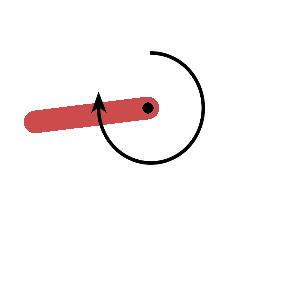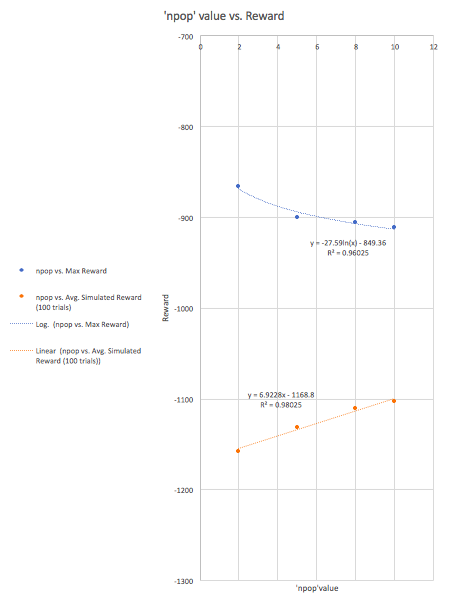Environment

While the original environment that the code was designed for Pendulum-v1 had a solve and termination case (950 steps in a close vertical position would win the environment and 20 degrees off top dead center would terminate the episode), the new environment had neither. It was easy for me to let the code run for 30 minutes with little signs of progress.
Environment Stats:
Description: Try to keep a frictionless pendulum standing up.
Action (Joint Effort) Min: -2.0 Max: 2.0
Reward: -(theta^2 + 0.1*theta_dt^2 + 0.001*action^2) Theta is normalized between -pi and pi. Therefore, the lowest cost is -(pi^2 + 0.1*8^2 + 0.001*2^2) = -16.2736044, and the highest cost is 0. In essence, the goal is to remain at zero angle (vertical), with the least rotational velocity, and the least effort.
Start State: Random angle from -pi to pi, and random velocity between -1 and 1
Stop State: None
Solve State: None
As a result, I felt I had to manually add to the code a ‘solve case’, which I placed at a reward of greater than -1000. Since the code began with a reward of ~-1700, I assumed that this would be a good benchmark for reinforcing the progress of the code.



